
How to Use GPSNEO 6M GPS: Examples, Pinouts, and Specs
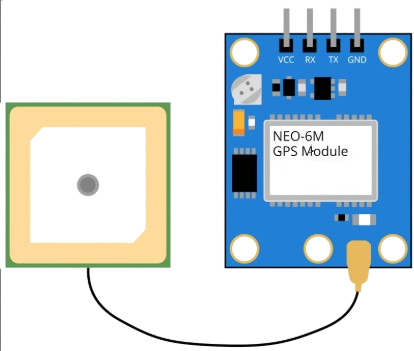
 Design with GPSNEO 6M GPS in Cirkit Designer
Design with GPSNEO 6M GPS in Cirkit DesignerIntroduction
The GPSNEO 6M GPS module, manufactured by Ardino (Part ID: UNO), is a high-performance GPS receiver designed to provide accurate positioning data for a wide range of applications. This module is compact, energy-efficient, and supports multiple satellite systems, making it a reliable choice for navigation, tracking, and geolocation projects. Its versatility and ease of integration make it a popular choice for hobbyists and professionals alike.
Explore Projects Built with GPSNEO 6M GPS
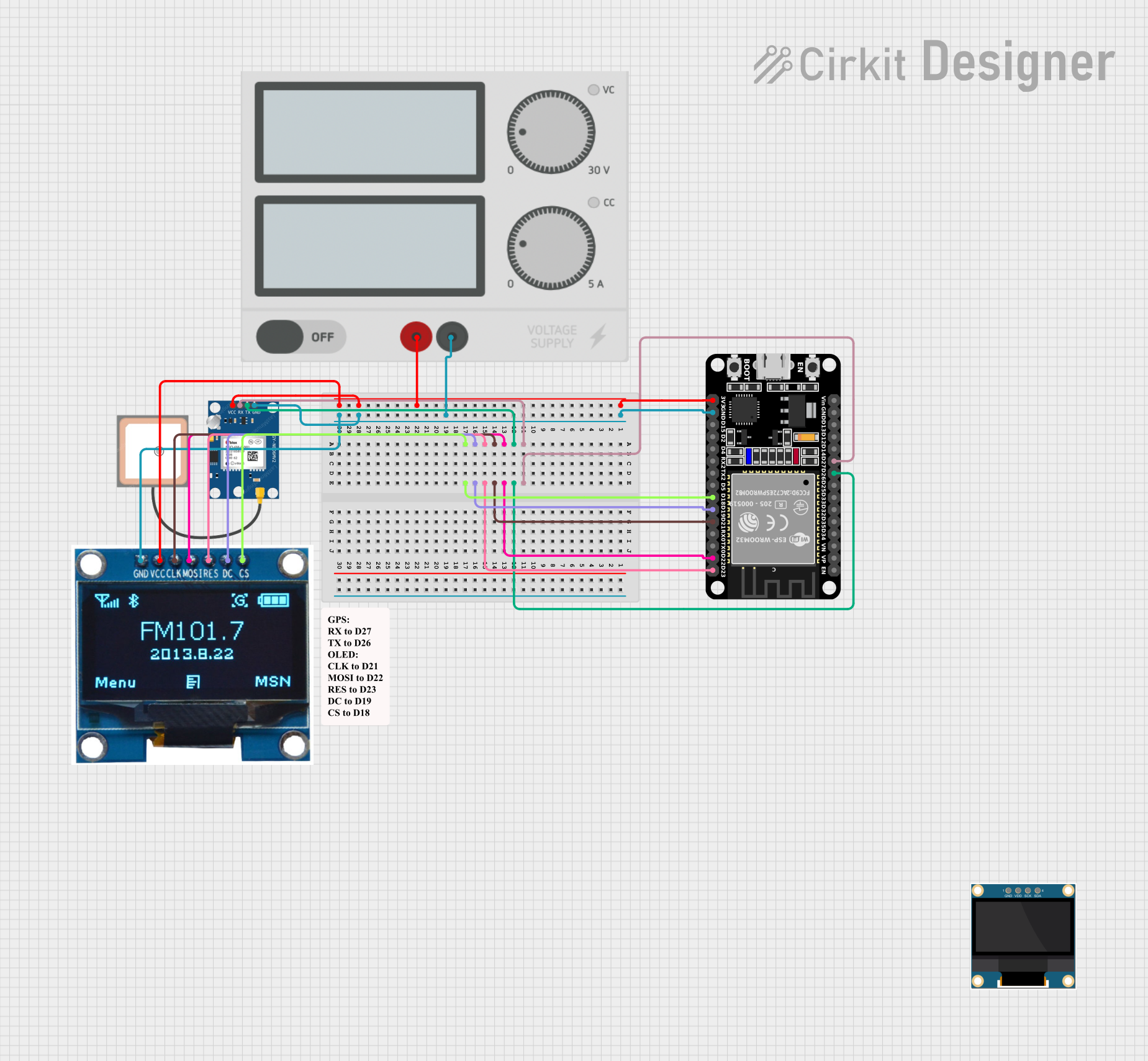
 Open Project in Cirkit Designer
Open Project in Cirkit Designer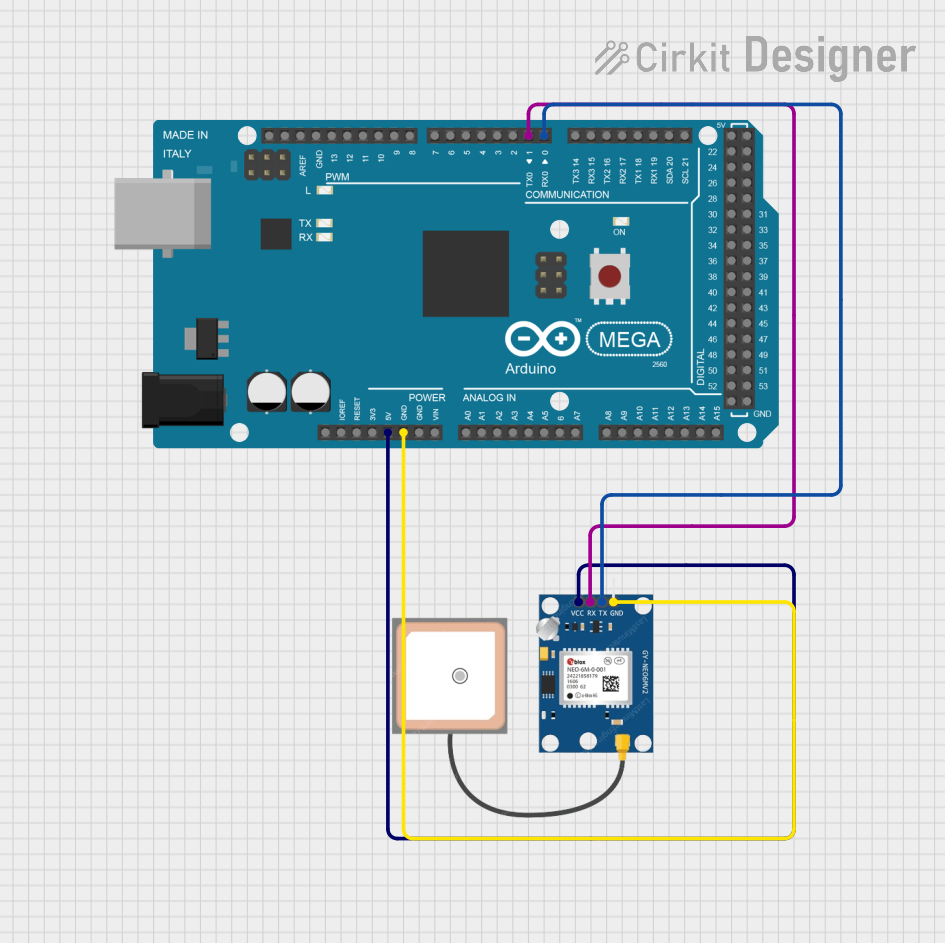
 Open Project in Cirkit Designer
Open Project in Cirkit Designer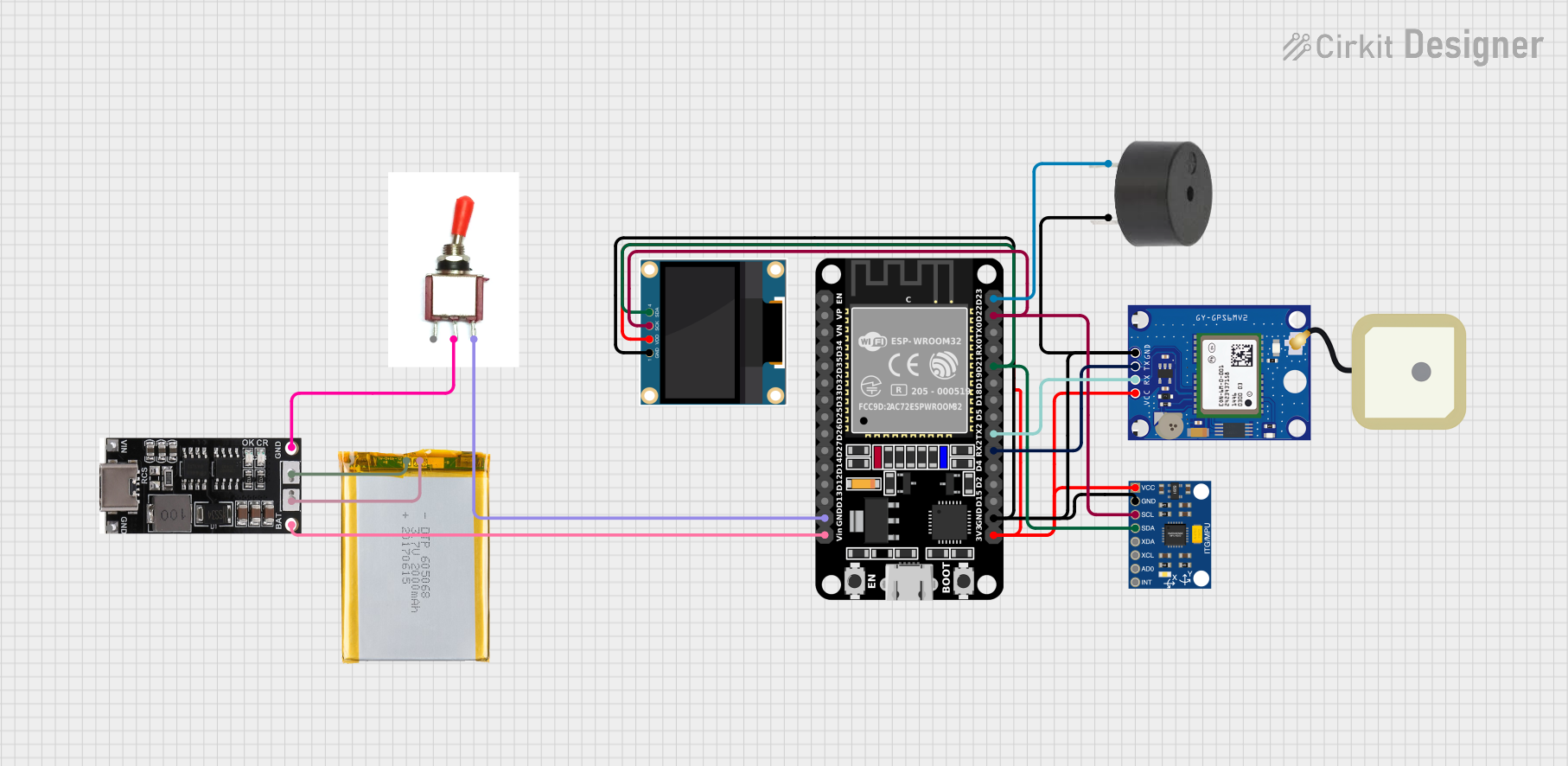
 Open Project in Cirkit Designer
Open Project in Cirkit Designer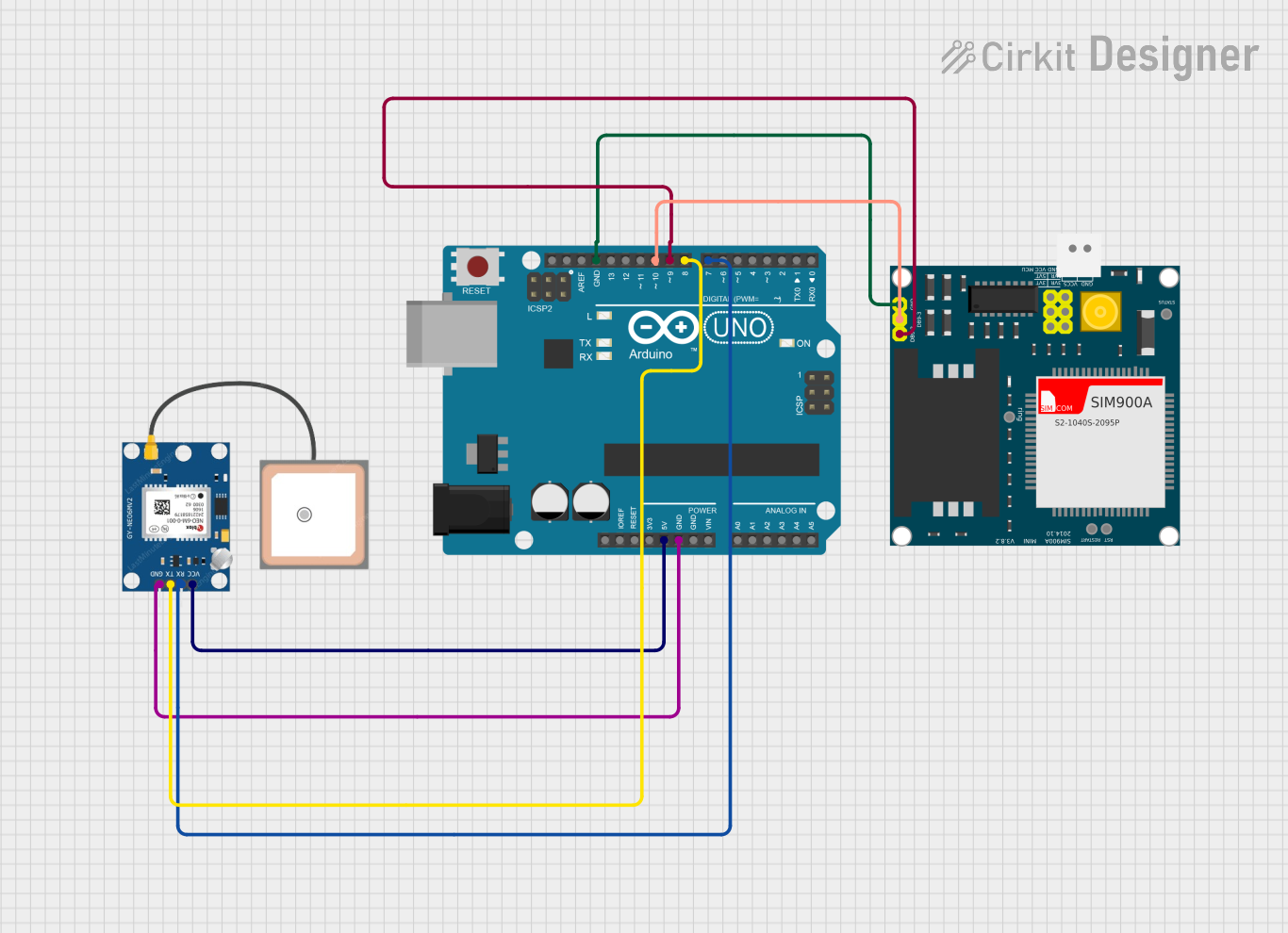
 Open Project in Cirkit Designer
Open Project in Cirkit DesignerExplore Projects Built with GPSNEO 6M GPS

 Open Project in Cirkit Designer
Open Project in Cirkit Designer
 Open Project in Cirkit Designer
Open Project in Cirkit Designer
 Open Project in Cirkit Designer
Open Project in Cirkit Designer
 Open Project in Cirkit Designer
Open Project in Cirkit DesignerCommon Applications and Use Cases
- Vehicle navigation systems
- Drone and UAV positioning
- Asset tracking and fleet management
- Geocaching and outdoor activities
- IoT devices requiring location data
- Time synchronization for embedded systems
Technical Specifications
The GPSNEO 6M GPS module is designed to deliver precise and reliable positioning data. Below are its key technical specifications:
General Specifications
| Parameter | Value |
|---|---|
| Manufacturer | Ardino |
| Part ID | UNO |
| Satellite Systems | GPS, GLONASS, QZSS |
| Positioning Accuracy | 2.5 meters CEP |
| Update Rate | 1 Hz (default), up to 5 Hz |
| Cold Start Time | < 27 seconds |
| Hot Start Time | < 1 second |
| Operating Voltage | 3.3V to 5V |
| Power Consumption | 45 mA (typical) |
| Communication Interface | UART (default), TTL |
| Antenna | External active antenna |
Pin Configuration and Descriptions
The GPSNEO 6M module has a simple pinout for easy integration into your projects. Below is the pin configuration:
| Pin Number | Pin Name | Description |
|---|---|---|
| 1 | VCC | Power input (3.3V to 5V) |
| 2 | GND | Ground connection |
| 3 | TX | UART Transmit pin (sends GPS data) |
| 4 | RX | UART Receive pin (receives configuration data) |
| 5 | PPS | Pulse Per Second output for timing applications |
Usage Instructions
The GPSNEO 6M GPS module is straightforward to use and can be easily integrated into circuits. Below are the steps and best practices for using the module:
Connecting the GPSNEO 6M to an Arduino UNO
- Power the Module: Connect the
VCCpin to the 5V output of the Arduino UNO and theGNDpin to the Arduino's ground. - Connect UART Pins:
- Connect the
TXpin of the GPS module to theRXpin (Pin 0) of the Arduino UNO. - Connect the
RXpin of the GPS module to theTXpin (Pin 1) of the Arduino UNO.
- Connect the
- Antenna Placement: Attach the external active antenna to the GPS module and ensure it has a clear view of the sky for optimal satellite reception.
- Upload Code: Use the Arduino IDE to upload the GPS data reading code (example provided below).
Example Code for Arduino UNO
The following code demonstrates how to read GPS data from the GPSNEO 6M module using the Arduino UNO:
#include <SoftwareSerial.h>
// Create a SoftwareSerial instance for GPS communication
SoftwareSerial gpsSerial(4, 3); // RX = Pin 4, TX = Pin 3
void setup() {
Serial.begin(9600); // Initialize Serial Monitor at 9600 baud
gpsSerial.begin(9600); // Initialize GPS module at 9600 baud
Serial.println("GPSNEO 6M GPS Module Test");
Serial.println("Waiting for GPS data...");
}
void loop() {
// Check if data is available from the GPS module
while (gpsSerial.available()) {
char gpsData = gpsSerial.read(); // Read one character from GPS module
Serial.print(gpsData); // Print the character to the Serial Monitor
}
}
Important Considerations and Best Practices
- Power Supply: Ensure a stable power supply (3.3V to 5V) to avoid performance issues.
- Antenna Placement: Place the antenna in an open area with minimal obstructions for better satellite reception.
- Baud Rate: The default baud rate for the GPSNEO 6M is 9600. Ensure your Arduino code matches this setting.
- Data Parsing: Use libraries like
TinyGPS++for easier parsing of GPS data (e.g., latitude, longitude, altitude).
Troubleshooting and FAQs
Common Issues and Solutions
No GPS Data Received
- Cause: Poor satellite reception or incorrect wiring.
- Solution: Ensure the antenna has a clear view of the sky and check all connections.
Garbage Data on Serial Monitor
- Cause: Mismatched baud rate between the GPS module and Arduino.
- Solution: Verify that both the GPS module and Arduino are set to the same baud rate (default: 9600).
Module Not Powering On
- Cause: Insufficient or incorrect power supply.
- Solution: Ensure the
VCCpin is connected to a 3.3V or 5V source and theGNDpin is properly grounded.
Intermittent GPS Signal
- Cause: Obstructions or interference.
- Solution: Relocate the antenna to an open area and minimize nearby electronic interference.
FAQs
Q1: Can the GPSNEO 6M work indoors?
A1: While the module may work indoors, satellite reception is significantly reduced. For best results, use the module outdoors with a clear view of the sky.
Q2: How many satellites does the GPSNEO 6M support?
A2: The module can track up to 22 satellites simultaneously, depending on the environment and satellite availability.
Q3: Can I increase the update rate beyond 1 Hz?
A3: Yes, the update rate can be configured up to 5 Hz using specific commands sent via the UART interface.
Q4: Is the module compatible with other microcontrollers?
A4: Yes, the GPSNEO 6M is compatible with most microcontrollers that support UART communication, including ESP32, Raspberry Pi, and STM32.
By following this documentation, you can effectively integrate and utilize the GPSNEO 6M GPS module in your projects.